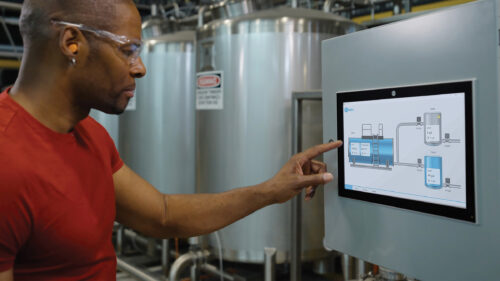Free, but not cheap
Free software is an enticing proposition. It allows us to stretch our project dollars to implement better controls and procedures. There are free operating systems (Linux), process control applications (such as ProcessViewBrowser—http://pvbrowser.org), and application development tools (such as MySQL, GNU SQL, Apache Web server, PHP, and Java IEDs).
Free software is an enticing proposition. It allows us to stretch our project dollars to implement better controls and procedures. There are free operating systems (Linux), process control applications (such as ProcessViewBrowser— https://pvbrowser.org ), and application development tools (such as MySQL, GNU SQL, Apache Web server, PHP, and Java IEDs). Growth of the Internet and the ability to quickly and easily share software has fueled availability of free software. As a result, IT organizations have been forced to develop special considerations for free software. Three that apply to control system development include ownership rights, total system cost, and acceptability of the solution.
Ownership rights: An important consideration is “what the owner gives, the owner can take away.” Rights given to you with free software are revocable at any time. Recently the owners of MySQL, a free SQL database widely used by IT organizations, changed its distribution license, catching many users by surprise and forcing them to reevaluate their use of MySQL. Unlike commercial software—where you have paid for a license to use and, therefore, have a contract with the owner—with free software you are at the mercy of the owner; who may have little financial incentive to allow you to continue use the software for free.
You must also consider who really owns the software. When software contains parts developed by many parties, obtaining rights from one author may not give you full rights. Most free software is built using other free software, and the chain of ownership is often confusing. For example, the recent patent fight over OPC applications means that, if you use free OPC software, you could assume the entire legal risk with no support from the developer. Your legal counsel should review all free software license agreements to protect you from possible later legal action.
Don’t confuse free software with open software. The two are distinct. Free software is software for which the owner has granted the rights to use without payment. With open software, the owner makes public the source code. Free software is not necessarily open, and open software is not necessarily free. The owner of software may distribute the source code, but not give the rights to free use; or the owner of the software may distribute program executables for free use, but not release source code.
Total costs: software is a small part of total project cost. A rule of thumb is that the project and integration costs for HMI, MES, and Historian systems are 3 to 5 times that of the software license. Saving money on software may be only a small savings in the project and, if you need training and support for the free software, there may be no actual savings. Cost is an important criterion. Deciding to use free or open software should not be a political statement. Early developers of free software were often making political statements about commercial software, and early users supported them even when the functionality and stability did not meet commercial standards. Most IT organizations now compare functionality. For example, Massachusetts recently changed the focus of its IT procurement policy from open source solutions to open standards and best value solutions.
Acceptable standards: Most corporate IT departments have standards for tools and applications. Free software has to interoperate, or at least communicate, with standard corporate systems. It is important to ensure that the free solution is acceptable and compatible with corporate IT standards. You do not want to trigger the “corporate immune system” by bringing a “foreign body” into the IT infrastructure. It can be very difficult to be the first MySQL application in an Oracle shop.
Sometimes free software is the best solution, but make sure:
It is the best value and not a political statement;
You have the full usage rights;
You are prepared to support the software; and
It is compatible with corporate standards.
Author Information
Dennis Brandl, dbrandl@brlconsulting.com , is the president of BR&L Consulting, a consulting firm focusing on manufacturing IT solutions, based in Cary, N.C.
Do you have experience and expertise with the topics mentioned in this content? You should consider contributing to our CFE Media editorial team and getting the recognition you and your company deserve. Click here to start this process.





